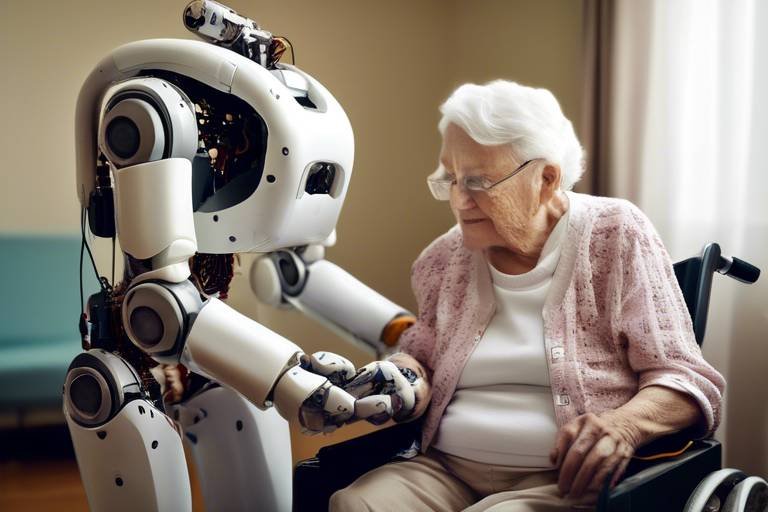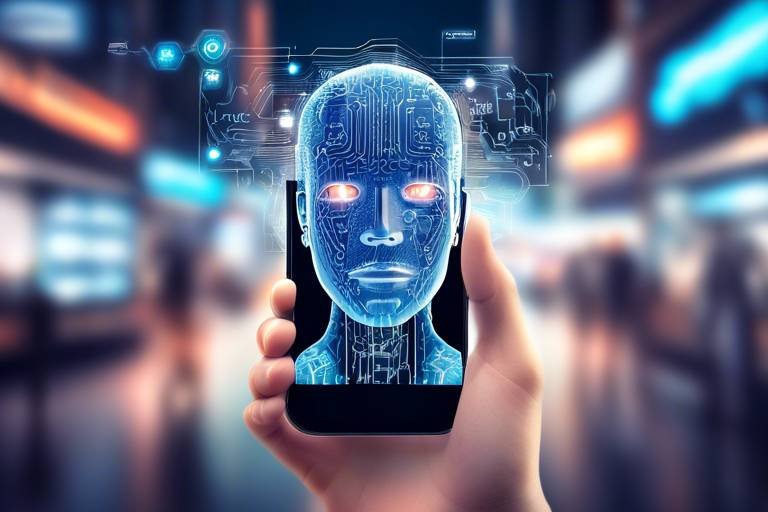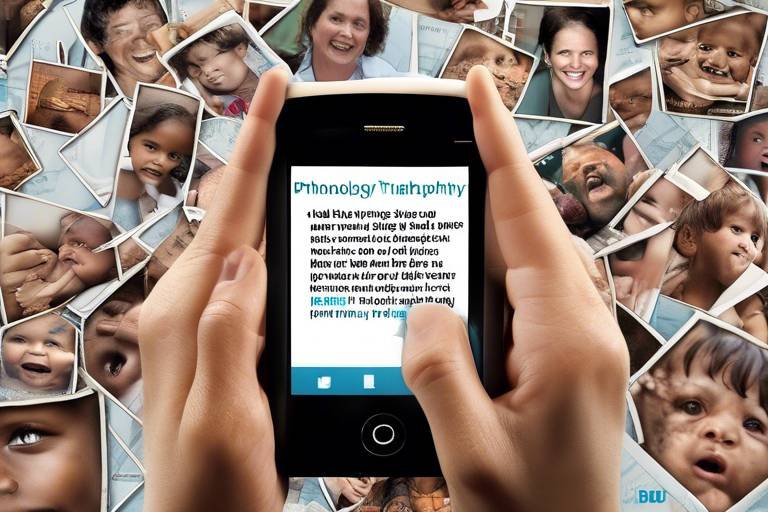The Role of AI in Enhancing Disaster Preparedness
In today's world, where natural disasters seem to strike with increasing frequency and intensity, the need for effective disaster preparedness has never been more critical. Enter artificial intelligence (AI), a game-changer that is revolutionizing how we prepare for, respond to, and recover from emergencies. Imagine having a powerful ally that can analyze vast amounts of data in real-time, predict potential disasters, and provide actionable insights to save lives. Sounds incredible, right? Well, that’s exactly what AI is doing in the realm of disaster management.
AI technologies are not just about robots and automation; they encompass a wide range of tools and methodologies that enhance our ability to anticipate and react to crises. From machine learning algorithms that sift through historical data to identify patterns, to sophisticated data analytics that help decision-makers devise effective response strategies, AI is making waves in disaster preparedness. Think of it as having a highly skilled assistant who never sleeps, constantly monitoring and analyzing data to keep us safe.
One of the most significant advantages of integrating AI into disaster management is its ability to improve response times. In emergencies, every second counts. AI can process information faster than any human could, allowing for quicker decision-making and resource allocation. For instance, during a wildfire, AI can analyze weather patterns, terrain data, and even social media posts to determine the best evacuation routes and resource deployment. This level of efficiency can mean the difference between life and death.
Moreover, AI's predictive capabilities are truly remarkable. By harnessing the power of predictive analytics, we can foresee potential disasters before they occur. AI algorithms analyze historical data, weather patterns, and geographical information to provide critical insights that enhance our preparedness. This proactive approach allows communities to implement safety measures and allocate resources effectively, ensuring that they are ready to face whatever challenges may arise.
But how does AI achieve all this? It starts with comprehensive data collection and integration. AI systems require a vast array of data to function optimally. This includes everything from meteorological data and geological surveys to social media activity and satellite imagery. By integrating these diverse data sources, AI can create a more accurate and holistic view of potential risks, ultimately leading to better forecasting and preparedness strategies.
As we dive deeper into the capabilities of AI, we discover the role of remote sensing technologies. These tools, such as satellites and drones, provide invaluable data for predicting disasters. AI processes this information, enhancing our situational awareness before a disaster strikes. Imagine being able to monitor changes in land use or detect early signs of flooding from above—this is the power of AI combined with remote sensing.
Additionally, social media analysis has emerged as a vital component in disaster preparedness. With millions of people sharing real-time updates on platforms like Twitter and Facebook, AI can sift through this data to identify emerging trends and potential risks. For example, a sudden spike in posts about flooding in a particular area can trigger alerts, allowing authorities to respond swiftly and effectively.
AI also plays a significant role in enhancing communication during disasters. Effective communication is vital for ensuring that affected communities receive timely information and updates. AI technologies facilitate real-time communication, helping to disseminate crucial information to those in need. This is where chatbots and virtual assistants come into play, providing instant answers to queries and updates during emergencies.
Moreover, automated alert systems leverage AI to send timely warnings to communities at risk. These systems can analyze data and predict when a disaster might occur, ensuring that people are informed well in advance. This proactive approach not only enhances safety but also empowers individuals to take prompt action in the face of impending danger.
In conclusion, the integration of AI into disaster preparedness is not just a technological advancement; it is a vital evolution that enhances our ability to protect lives and mitigate the impacts of disasters. As we continue to explore the potential of AI, one thing is clear: it is an indispensable tool in our quest for a safer and more resilient future.
- How does AI predict disasters? AI uses historical data, weather patterns, and various data sources to forecast potential disasters.
- What role do social media platforms play in disaster preparedness? AI analyzes social media trends to identify emerging risks and inform emergency response efforts.
- Can AI improve communication during disasters? Yes, AI technologies like chatbots and automated alert systems enhance real-time communication and information dissemination.
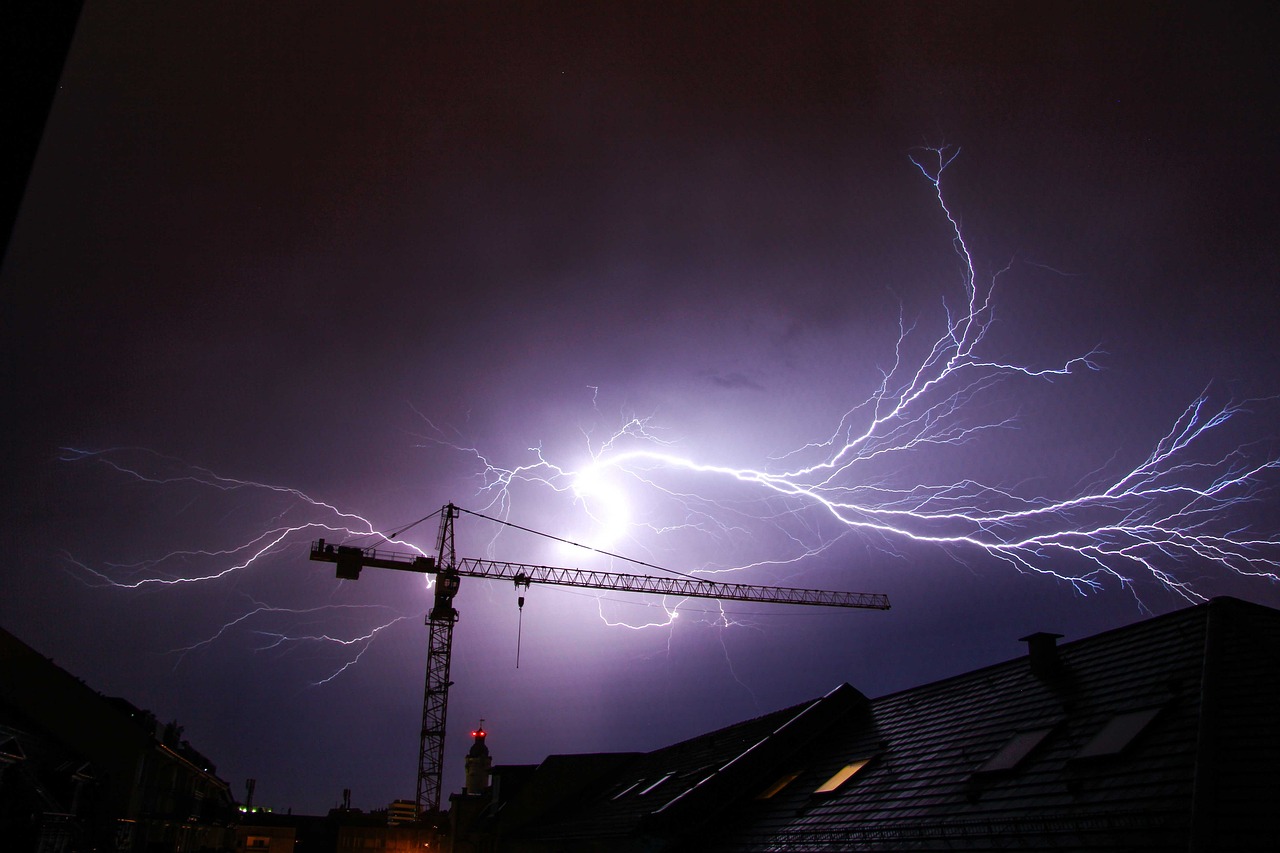
Understanding AI in Disaster Management
Artificial Intelligence (AI) is no longer just a futuristic concept; it's a powerful tool reshaping how we approach disaster management. Imagine having a system that can analyze vast amounts of data in real-time, predicting when and where disasters might strike. Sounds like something out of a sci-fi movie, right? But this is the reality we are stepping into, thanks to AI. By leveraging machine learning algorithms and advanced data analytics, AI enhances our ability to prepare for, respond to, and recover from disasters.
At its core, AI in disaster management revolves around understanding patterns and making predictions. With the help of historical data, AI systems can identify trends that humans might overlook. For instance, they can analyze previous weather patterns, seismic activity, and even social behaviors to forecast potential disasters. This predictive capability is not just about crunching numbers; it's about saving lives. By anticipating disasters, communities can implement proactive measures, allocate resources efficiently, and ultimately mitigate the impact of these events.
Furthermore, AI's role extends beyond mere prediction. It also enhances the response strategies during a disaster. When an emergency strikes, timely and accurate information is crucial. AI-driven tools can analyze incoming data from various sources—like weather reports, satellite imagery, and even social media posts—to provide decision-makers with actionable insights. This means that during a crisis, emergency responders can make informed decisions quickly, ensuring that help reaches those in need as swiftly as possible.
To illustrate the impact of AI in disaster management, consider the following table, which highlights key AI applications:
| AI Application | Description |
|---|---|
| Predictive Analytics | Analyzes historical data to forecast disasters and assess risks. |
| Remote Sensing | Utilizes satellite and drone data for real-time monitoring and assessment. |
| Decision Support Systems | Provides actionable insights to emergency managers during crises. |
| Automated Alerts | Sends timely notifications to communities about impending disasters. |
In summary, the integration of AI into disaster management is revolutionizing how we prepare for and respond to emergencies. By harnessing the power of data and advanced algorithms, we can not only predict disasters more accurately but also respond more effectively. As we continue to develop these technologies, the potential for AI to save lives and enhance community resilience becomes increasingly clear.

Predictive Analytics for Disaster Forecasting
Predictive analytics has emerged as a game-changer in the realm of disaster forecasting, allowing us to foresee potential calamities before they wreak havoc. Imagine having the ability to predict the path of a hurricane or the likelihood of an earthquake with a level of precision that can save lives and property. This is not just a futuristic dream; it is the reality that artificial intelligence (AI) brings to the table. By leveraging vast amounts of historical data and employing sophisticated algorithms, AI can analyze patterns and trends that human analysts might miss. This capability transforms how we prepare for disasters, making our response strategies more proactive rather than reactive.
At the heart of predictive analytics is the concept of data. The more data we have, the better our predictions can be. AI utilizes various data sources, including meteorological data, geological surveys, and even social media trends, to create a comprehensive picture of potential disaster scenarios. For instance, when predicting floods, AI systems might analyze rainfall patterns, river levels, and even urban development data to assess risk levels accurately. The integration of these diverse data sets enables decision-makers to formulate effective preparedness strategies tailored to specific threats.
To make predictive analytics effective, it's crucial to gather and integrate a wide array of data types. This includes quantitative data from sensors and satellites, as well as qualitative data from reports and social media. AI excels in processing this information, identifying correlations, and generating insights that can be acted upon. For example, consider the role of remote sensing technologies that monitor environmental changes. By collecting data on soil moisture, temperature, and vegetation health, AI can predict drought conditions that may lead to wildfires. The ability to process and analyze this data in real-time is what sets AI apart from traditional forecasting methods.
Remote sensing technologies, such as satellites and drones, play a pivotal role in disaster prediction. These tools provide critical data that AI systems can process to enhance situational awareness. For instance, satellites can capture images of storm systems, while drones can survey affected areas post-disaster. The data collected through these technologies allows AI to model potential disaster scenarios, providing invaluable insights. Imagine a satellite detecting changes in ocean temperatures that signal an impending hurricane; AI can analyze this data and predict the storm's trajectory. This level of foresight is essential for effective disaster management.
In today's digital age, social media platforms are treasure troves of real-time data. AI can sift through the vast amounts of information generated on these platforms to identify trends and potential risks. For example, a spike in posts about severe weather conditions or community concerns can alert authorities to emerging threats. By analyzing this data, AI can help inform disaster preparedness efforts and ensure that communities are aware of the risks they face. The ability to tap into the collective consciousness of social media users provides a unique advantage in understanding public sentiment and potential disaster scenarios.
AI-driven decision support systems are crucial in emergency management. They provide actionable insights to decision-makers during crises, improving response efficiency. With the help of predictive analytics, these systems can simulate various disaster scenarios, allowing officials to evaluate the potential impact of different responses. This capability is akin to having a strategic game plan ready before the first whistle blows in a sports match. By preparing for various outcomes, emergency managers can make informed decisions that ultimately save lives and resources.
In conclusion, predictive analytics is revolutionizing disaster forecasting by harnessing the power of AI to analyze data from multiple sources, including remote sensing technologies and social media. The insights generated not only enhance our understanding of potential threats but also empower communities to prepare effectively. As we continue to develop and refine these technologies, the hope is that we can mitigate the impacts of disasters and protect lives more efficiently than ever before.

Data Collection and Integration
When it comes to the effectiveness of predictive analytics in disaster management, one of the most critical components is the process. Imagine trying to solve a jigsaw puzzle without all the pieces—this is exactly what disaster preparedness would look like without comprehensive data. The more data we can gather from various sources, the clearer the picture becomes. AI plays a pivotal role in this endeavor by not only collecting vast amounts of data but also integrating it into a coherent framework that can be analyzed for actionable insights.
To start, there are several types of data that are essential for effective disaster forecasting. This includes historical weather patterns, geological data, population density information, and even real-time environmental conditions. AI systems can analyze these diverse data sets to identify patterns that may indicate an impending disaster. For instance, by looking at historical data, AI can predict the likelihood of a flood in a particular area based on rainfall patterns and soil saturation levels.
Furthermore, the integration of data from different sources is where AI truly shines. Traditional methods of data collection often involve manual processes that can be time-consuming and prone to errors. In contrast, AI can automate the gathering and merging of data from various platforms, such as weather stations, satellite imagery, and even social media feeds. This results in a more dynamic and holistic view of potential risks. For example, AI can combine meteorological data with social media posts about local conditions to provide real-time insights into how a storm is affecting a community.
One fascinating aspect of this integration is the role of remote sensing technologies, which gather data from satellites and drones. These technologies can capture high-resolution images and environmental data from hard-to-reach areas, providing critical information that can be processed by AI algorithms. The ability of AI to analyze this data quickly allows emergency management teams to make informed decisions in real time, enhancing their situational awareness.
Another avenue for data integration is through social media analysis. Platforms like Twitter and Facebook generate a wealth of real-time information that can be invaluable during a disaster. AI algorithms can sift through this data to identify trends, such as an increase in posts about flooding in a specific area, which can alert authorities to potential risks. This kind of integration not only speeds up the response time but also ensures that decision-makers have access to the latest information from the ground.
In summary, the role of data collection and integration in disaster preparedness cannot be overstated. It is the foundation upon which predictive analytics is built, allowing for a more accurate and timely response to emergencies. By leveraging AI technologies to gather and synthesize data from various sources, we can significantly enhance our ability to anticipate and respond to disasters, ultimately saving lives and reducing the impact of such events on communities.

Remote Sensing Technologies
When it comes to disaster prediction, are like the eyes in the sky, offering a bird's-eye view of our planet. These technologies, which include satellites and drones, are instrumental in gathering critical data that can significantly enhance our understanding of impending disasters. Imagine being able to monitor a storm brewing in the ocean or track wildfires in real-time—this is the power of remote sensing. By capturing high-resolution images and collecting various environmental data, these technologies provide essential insights that help authorities make informed decisions before a disaster strikes.
One of the most remarkable aspects of remote sensing is its ability to analyze vast amounts of data quickly. For instance, satellites orbiting the Earth can monitor changes in land use, vegetation cover, and even temperature fluctuations. This data is then processed using artificial intelligence algorithms that can detect patterns and anomalies. By identifying these changes early, emergency management teams can better prepare for potential disasters, ensuring that resources are allocated effectively and that communities are kept safe.
Moreover, drones have emerged as a game-changer in disaster management. With their ability to fly at low altitudes and navigate challenging terrains, drones can capture detailed images and gather data in areas that may be inaccessible to traditional monitoring methods. For example, during a flood, drones can provide real-time footage of affected areas, allowing responders to assess the situation and deploy aid where it’s needed most. This capability not only enhances situational awareness but also speeds up the response time, which can be crucial in saving lives.
In addition to monitoring weather patterns and natural disasters, remote sensing technologies also play a vital role in post-disaster assessments. After a disaster has occurred, these technologies can help evaluate the extent of the damage, guiding recovery efforts. For instance, by analyzing before-and-after images, authorities can identify the hardest-hit areas and prioritize their response strategies accordingly. This process is essential for efficient resource allocation and ensuring that aid reaches those who need it the most.
To summarize, remote sensing technologies are revolutionizing disaster preparedness and response. By providing critical data and enhancing situational awareness, these technologies empower decision-makers to act swiftly and effectively. As we continue to advance in the realm of artificial intelligence and data analytics, the integration of remote sensing will undoubtedly play an even more significant role in safeguarding communities and minimizing the impact of disasters.
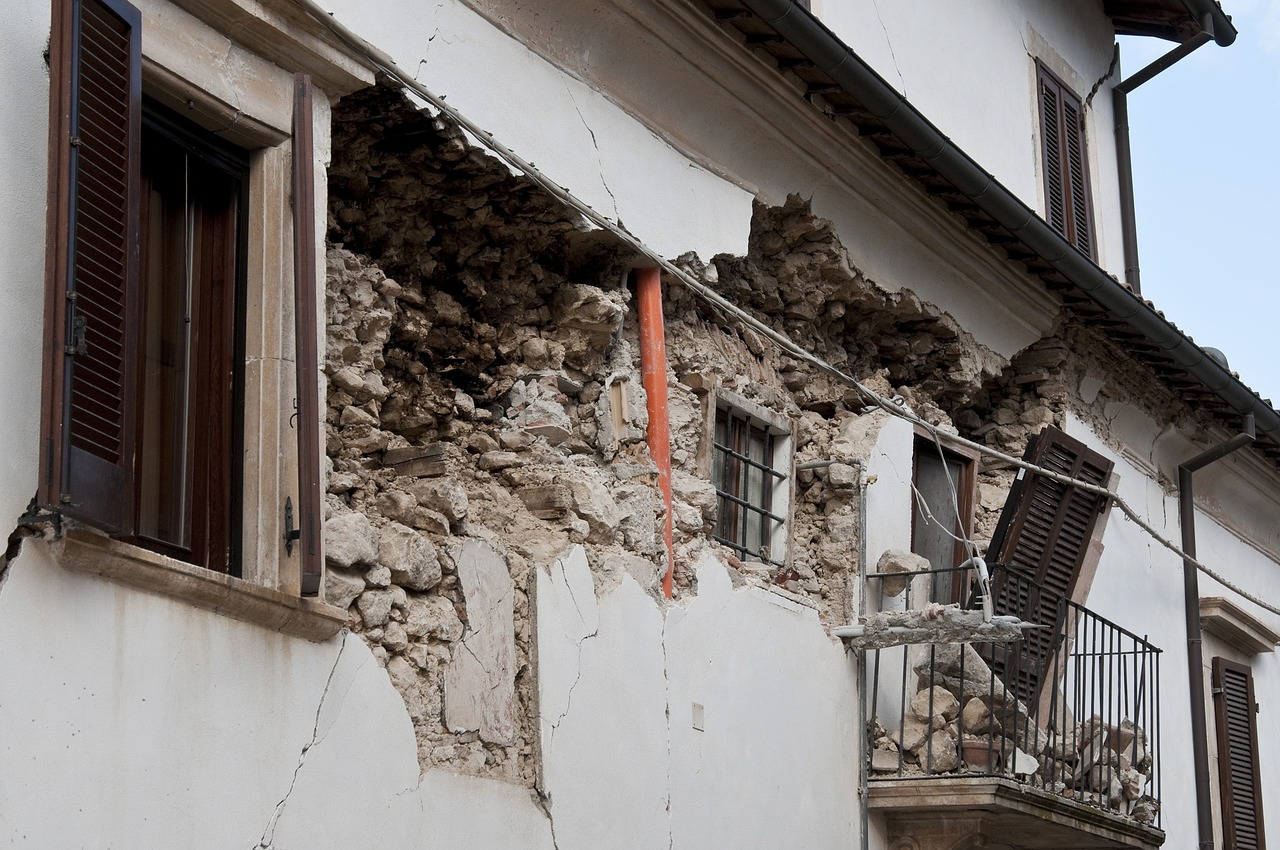
Social Media Analysis
In today's digital age, social media has become a powerful tool for communication and information sharing. During disasters, the volume of data generated on platforms like Twitter, Facebook, and Instagram can be overwhelming. However, artificial intelligence (AI) steps in to sift through this massive amount of information, identifying trends and potential risks that could aid in disaster preparedness.
One of the most fascinating aspects of AI in social media analysis is its ability to process real-time data. Imagine a bustling city where a natural disaster is about to strike. As citizens post updates, share their experiences, and express their concerns, AI algorithms can analyze this data to detect patterns and emerging threats. For instance, if multiple users in a specific area begin to report unusual weather conditions or rising water levels, AI can flag this information for emergency management teams. This rapid analysis can be the difference between life and death, allowing authorities to act swiftly and effectively.
Moreover, AI doesn’t just analyze posts; it can also gauge public sentiment. By understanding how people feel about an impending disaster or a response effort, decision-makers can tailor their communication strategies. For example, if AI detects a surge in panic or misinformation on social media, officials can quickly address these concerns, providing accurate information to calm the public. This is crucial because effective communication during emergencies can significantly influence the behavior of communities, ensuring that people take the necessary precautions to stay safe.
To illustrate the impact of social media analysis, consider the following table that outlines the key benefits of AI in this context:
| Benefit | Description |
|---|---|
| Real-Time Monitoring | AI can analyze social media posts as they occur, providing immediate insights into developing situations. |
| Sentiment Analysis | Understanding public feelings can help authorities tailor their responses and communications. |
| Risk Identification | AI can detect early signs of disasters based on user reports, helping to mobilize resources faster. |
| Misinformation Management | By identifying false information, AI can help authorities counteract panic and confusion. |
In summary, social media analysis powered by AI is revolutionizing the way we prepare for and respond to disasters. By harnessing the collective voice of the public, AI can provide invaluable insights that enhance situational awareness and improve emergency management efforts. As we continue to navigate through an increasingly interconnected world, the role of social media in disaster preparedness will only grow, making it an essential component of modern emergency response strategies.
- How does AI analyze social media data during disasters? AI uses algorithms to process large volumes of data, identifying patterns, trends, and sentiment to inform emergency response efforts.
- What types of social media platforms are most useful for disaster preparedness? Platforms like Twitter, Facebook, and Instagram are particularly valuable due to their real-time updates and widespread use.
- Can social media analysis predict disasters? While it can't predict disasters with absolute certainty, AI can identify early warning signs and trends that indicate potential risks.
- How can misinformation on social media be managed during disasters? AI can detect false information and help authorities respond quickly to clarify facts and provide accurate updates to the public.

AI-Driven Decision Support Systems
In the chaotic realm of disaster management, having reliable information at your fingertips can be the difference between life and death. This is where come into play. These sophisticated systems harness the power of artificial intelligence to provide emergency managers with actionable insights during crises. Imagine being able to predict the path of a hurricane or assess the damage from an earthquake in real-time—this is not science fiction; it’s the reality that AI is helping to create.
One of the key advantages of AI-driven decision support systems is their ability to analyze vast amounts of data quickly. They can process information from various sources, including satellite imagery, social media feeds, and historical disaster data. By synthesizing this information, these systems can generate predictive models that help emergency responders make informed decisions. For instance, during a flood, an AI system can evaluate rainfall patterns, river levels, and soil saturation to predict which areas are at the highest risk of inundation.
Moreover, these systems are designed to be user-friendly, allowing decision-makers to visualize complex data through intuitive interfaces. For example, a map displaying real-time flood risks or a dashboard showing resource availability can significantly enhance situational awareness. This visual representation of data makes it easier for emergency managers to communicate with their teams and coordinate responses effectively.
To illustrate the capabilities of AI-driven decision support systems, consider the following table that outlines their key features:
| Feature | Description |
|---|---|
| Real-time Data Processing | Analyzes incoming data streams for immediate insights. |
| Predictive Modeling | Forecasts disaster scenarios based on historical data. |
| User-friendly Interfaces | Visual tools for easy data interpretation and decision-making. |
| Resource Allocation | Optimizes the distribution of resources during emergencies. |
Furthermore, these AI systems can learn and adapt over time. As they process more data, they refine their algorithms, improving their accuracy and efficiency. This is particularly beneficial in a field where every second counts. For example, during wildfires, AI can help determine the best evacuation routes and resource deployment strategies, ensuring that responders can act swiftly and effectively.
In summary, AI-driven decision support systems are transforming the landscape of disaster management. By providing real-time insights, predictive analytics, and intuitive interfaces, they empower emergency managers to make better decisions under pressure. As we continue to integrate AI technologies into our preparedness strategies, we can look forward to a future where disaster response is not just reactive but proactive, ultimately saving more lives and minimizing the impact of disasters.
- What are AI-driven decision support systems?
These are advanced systems that utilize artificial intelligence to analyze data and provide actionable insights for emergency management during disasters. - How do these systems improve disaster response?
They enhance situational awareness, optimize resource allocation, and offer predictive analytics to inform decision-making. - Can AI systems learn over time?
Yes, AI systems can adapt and improve their accuracy by processing more data and refining their algorithms. - Are these systems user-friendly?
Absolutely! They are designed with intuitive interfaces that make it easy for emergency managers to interpret complex data.

Enhancing Communication During Disasters
Effective communication during disasters is not just important; it can be the difference between life and death. When calamity strikes, the chaos can be overwhelming, and the need for clear, timely information becomes paramount. Here’s where artificial intelligence (AI) steps in, transforming the way we communicate in emergencies. Imagine a world where information flows seamlessly, helping communities prepare and respond to disasters more effectively. AI technologies are making this a reality, ensuring that vital messages reach those who need them most.
One of the most significant advancements in disaster communication is the use of chatbots and virtual assistants. These AI-driven tools are designed to provide real-time information to individuals during emergencies. Picture this: a family is huddled together during a severe storm, and they have questions about evacuation routes or shelter locations. Instead of frantically searching for information, they can simply ask a chatbot on a messaging platform. These virtual assistants can quickly provide answers, reducing anxiety and ensuring that people have the information they need to stay safe.
Moreover, automated alert systems represent another groundbreaking application of AI in disaster communication. These systems are programmed to send out timely warnings and updates to communities at risk. For instance, when an earthquake is detected, an automated alert system can instantly notify residents via text messages, social media, or even sirens. This rapid dissemination of information empowers individuals to take prompt action, whether it’s evacuating their homes or seeking shelter. The speed and efficiency of these systems can significantly enhance community resilience during disasters.
To illustrate the impact of these AI technologies, consider the following table that outlines the key benefits of enhanced communication during disasters:
| AI Technology | Benefit |
|---|---|
| Chatbots and Virtual Assistants | Provide real-time answers and updates, alleviating confusion. |
| Automated Alert Systems | Deliver timely warnings to ensure quick community responses. |
| Social Media Monitoring | Analyze trends to identify potential risks and inform strategies. |
In addition, AI can analyze data from various sources, including social media platforms, to gauge public sentiment and identify emerging risks. During a disaster, social media becomes a hub of information, where people share their experiences and needs. By leveraging AI to sift through this vast amount of data, emergency managers can gain insights into the situation on the ground, allowing them to tailor their communication strategies effectively. For instance, if a significant number of posts indicate confusion about evacuation procedures, authorities can quickly address this gap through targeted messaging.
Ultimately, the integration of AI in disaster communication not only enhances the flow of information but also fosters a sense of community. When people feel informed and connected, they are more likely to participate in preparedness efforts and respond effectively during emergencies. In this way, AI is not just a tool; it’s a partner in building resilient communities capable of withstanding the challenges posed by disasters.
- How does AI improve communication during disasters?
AI enhances communication by providing real-time information through chatbots, automated alerts, and social media analysis, ensuring that communities receive timely updates. - What role do chatbots play in disaster scenarios?
Chatbots assist individuals by answering questions and providing critical information during emergencies, helping to reduce panic and confusion. - Can AI predict disasters effectively?
Yes, AI uses predictive analytics to analyze historical data and forecast potential disasters, allowing communities to prepare in advance.

Chatbots and Virtual Assistants
In the chaotic moments that follow a disaster, having timely and accurate information can make all the difference. This is where chatbots and virtual assistants step in, acting as the frontline in communication between emergency services and the public. Imagine a scenario where a community is bracing for an impending hurricane. Instead of waiting for updates through traditional media, residents can simply engage with a chatbot to get real-time information about evacuation routes, shelter locations, and safety tips. These AI-driven tools are designed to provide immediate responses to a wide range of queries, ensuring that people have access to critical information when they need it the most.
Chatbots and virtual assistants utilize natural language processing (NLP) to understand and respond to user inquiries. This technology enables them to interpret not just the words used but also the intent behind them. For instance, if someone types, "What should I do if I smell gas?" the chatbot can quickly provide tailored safety instructions, potentially preventing a disaster from escalating. The efficiency of these systems means they can handle thousands of inquiries simultaneously, which is crucial during high-stress situations when human operators may be overwhelmed.
Moreover, these AI tools can be integrated into various platforms, including websites, mobile apps, and social media channels, making them accessible to a broad audience. This means that whether someone is at home, on the go, or even at work, they can receive updates and instructions without delay. To illustrate their effectiveness, consider the following table that summarizes the key benefits of using chatbots and virtual assistants during disasters:
| Benefit | Description |
|---|---|
| 24/7 Availability | Chatbots provide round-the-clock assistance, ensuring that information is always accessible. |
| Instant Responses | They can answer queries in real-time, reducing the wait time for critical information. |
| Scalability | Chatbots can handle a large volume of inquiries simultaneously, unlike human operators. |
| Multi-Platform Integration | Accessible across various platforms, ensuring that users can reach them wherever they are. |
| Personalized Information | They can tailor responses based on user location and specific needs, enhancing relevance. |
In addition to providing information, chatbots can also play a significant role in collecting data during and after a disaster. For example, they can ask users to report their status, such as whether they are safe or need assistance. This data can then be aggregated and analyzed to inform emergency services about areas that require immediate attention. This feedback loop not only enhances situational awareness but also allows for a more coordinated response.
Ultimately, the integration of chatbots and virtual assistants into disaster preparedness and response strategies represents a significant leap forward in how we communicate during emergencies. As technology continues to evolve, these tools will likely become even more sophisticated, offering predictive capabilities that can further enhance their effectiveness. Imagine a future where a virtual assistant can not only answer your questions but also proactively send alerts based on your location and the current threat level. That’s the power of AI in action, and it’s a game-changer for disaster management.
- How do chatbots gather information during a disaster? Chatbots can ask users to report their status, which helps collect real-time data on safety and needs.
- Can chatbots handle multiple languages? Yes, many advanced chatbots are equipped with multilingual capabilities to assist diverse populations.
- What happens if a chatbot cannot answer a question? In such cases, the chatbot can escalate the query to a human operator for further assistance.
- Are chatbots reliable during emergencies? While they are highly effective, it’s always best to verify information through official channels.

Automated Alert Systems
In the age of technology, have become a lifeline during disasters. Imagine you’re sipping your morning coffee when suddenly, your phone buzzes with a message warning you of an impending storm. This is the power of AI-driven alert systems—they work tirelessly behind the scenes to keep communities informed and safe. These systems utilize advanced algorithms to analyze vast amounts of data in real-time, ensuring that alerts are not only timely but also relevant to the specific needs of the community.
One of the most remarkable features of automated alert systems is their ability to reach a wide audience almost instantaneously. Whether it’s through text messages, mobile apps, or social media platforms, these systems ensure that critical information is disseminated quickly. For instance, when a natural disaster is detected, the system can send out alerts that include:
- Type of disaster (e.g., hurricane, earthquake)
- Expected time of arrival
- Safety precautions to take
- Evacuation routes and shelters
This swift communication can mean the difference between life and death. In fact, studies have shown that communities with effective alert systems experience significantly lower casualties during disasters. But how do these systems work? They rely on a combination of data sources, including weather forecasts, seismic activity, and even social media trends. By integrating these sources, automated alert systems can provide the most accurate and timely warnings possible.
Moreover, the adaptability of these systems is noteworthy. They can be customized to suit the unique needs of different regions. For example, an area prone to hurricanes may receive alerts that focus on evacuation procedures, while communities in earthquake-prone zones might get information on how to secure their homes. This targeted approach not only enhances the effectiveness of the alerts but also increases community trust in the system.
As we look to the future, the potential for further advancements in automated alert systems is enormous. With the integration of machine learning and big data analytics, these systems will become even more sophisticated. Imagine a world where alerts are not just reactive but proactive—where AI can predict the likelihood of a disaster and alert communities before it even happens. This vision is not far off, and it underscores the critical role that technology plays in disaster preparedness.
In conclusion, automated alert systems are a crucial component of modern disaster management strategies. They empower individuals and communities with the information they need to make informed decisions during emergencies. As technology continues to evolve, we can expect these systems to become even more effective, ensuring that when disaster strikes, everyone is prepared to respond.
- What are automated alert systems? Automated alert systems are technologies that send out timely warnings and information to the public during emergencies.
- How do these systems work? They analyze real-time data from various sources to provide accurate alerts tailored to specific communities.
- Can I customize alerts? Yes, many automated alert systems allow users to customize the types of alerts they receive based on their location and preferences.
- What types of disasters can these systems alert me about? They can alert you about a range of disasters, including hurricanes, earthquakes, floods, and other emergencies.
Frequently Asked Questions
- What is the role of AI in disaster preparedness?
AI plays a crucial role in enhancing disaster preparedness by providing advanced predictive analytics, improving data collection, and facilitating real-time communication. It enables agencies to forecast disasters more accurately and respond more effectively, ultimately saving lives.
- How does predictive analytics work in disaster management?
Predictive analytics utilizes AI algorithms to analyze historical data and identify patterns that can predict future disasters. By assessing various data points, it helps in making informed decisions and preparing communities for potential emergencies.
- What types of data are essential for effective predictive analytics?
Effective predictive analytics relies on diverse data sources, including historical disaster data, weather patterns, geographical information, and real-time social media trends. Integrating these data types enhances the accuracy of forecasts and preparedness strategies.
- How do remote sensing technologies contribute to disaster prediction?
Remote sensing technologies, such as satellites and drones, provide critical data that AI processes to assess environmental conditions. This information is vital for understanding potential risks and improving situational awareness before a disaster strikes.
- Can AI analyze social media for disaster preparedness?
Absolutely! AI can analyze vast amounts of real-time data from social media platforms to identify emerging risks and trends. This analysis helps inform disaster preparedness efforts and allows for timely responses to potential threats.
- What are AI-driven decision support systems?
AI-driven decision support systems are tools that assist emergency management by providing actionable insights during crises. These systems analyze data and present it in a way that helps decision-makers respond efficiently and effectively to disasters.
- How does AI enhance communication during disasters?
AI enhances communication by enabling real-time information dissemination through chatbots and automated alert systems. These technologies ensure that affected communities receive timely updates and crucial information during emergencies.
- What role do chatbots play in disaster management?
Chatbots serve as virtual assistants that provide immediate answers to queries and disseminate important updates during disasters. They help streamline communication and ensure that people have access to vital information when they need it most.
- How do automated alert systems work?
Automated alert systems leverage AI to analyze data and send timely warnings to communities about impending disasters. These alerts help people prepare and take necessary actions to ensure their safety.











